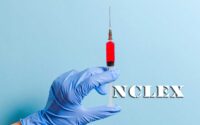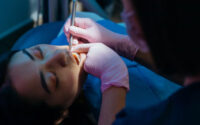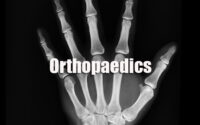Skin and V D MCQ
Skin and V D MCQ paper for the written examination is given below. Candidates who are looking for Skin and Venereal Disease exam MCQ paper can find in this section. The applied candidates who are getting prepared for the Skin and V D can view this page for the Skin and V D Last Ten Years MCQ Papers.

Download the Skin and V D MCQ & Solutions & make it as a reference for your exam preparation. Take advantage of these Skin and Venereal Disease MCQ Papers in a proper manner to get qualifying Marks. Last 5 years Skin and V D MCQ Papers provided here. Candidates who are applied for the above exam can check and download the Skin and V D MCQ Papers from here.
MCQ on Skin and V D
1. Tinea Nigra is caused by –
(1) Aspergillus Niger
(2) Trchosporom Ovoides
(3) Hortaea Werneckii
(4) Piedrata hortae
2. Which of the following dermatological condition is not seen in HIV infection?
(1) Seborrhoeic dermatitis
(2) Psoriasis
(3) Granuloma multiforme
(4) Granuloma annulare
3. H. Ducreyiisa-
(1) Gram positive facultative aerobic coccobacillus
(2) Gram negative facultative anaerobic coccobacillus
(3) Gram negative facultative facultative aerobic coccobacillus
(4) Gram positive facultative anaerobic coccobacillus
4. Favus type tinea capitis is caused by-
(1) T. Soudanense
(2) T. Yaoundei
(3) T. Schoenleinii
(4) T. Gourvilii
5. Vesiculobullous reactions is seen with which of the following fungus?
(1) T. rubrum
(2) T. Interdigitale
(3) T. violaceum
(4) T. concentricum
6. In ocular cicatriaal pemphigoid, which antigen is specific?
(1) Auto antibodies against 06 chain of α6β4 integrin
(2) Auto antibody agents β4 chain of α6β4 antigen
(3) BP-1 and BP-2 antigen
(4) All of the above
7. What is Murray William’s wart?
(1) Multiple seborrheic keratosis occurring in areas of resolved eczema
(2) Due to human papilloma virus
(3) A manifestations of secondary syphilis
(4) It is a cutaneous manifestations of immunocompromised patient
8. Which statement is incorrect for TRAPS (Tumor Necrosis Factor Receptor Associated Periodic Syndrome)?
(1) First manifest in childhood or adolescence and is characterized by episode of pyrexia, lasting 1-3 weeks
(2) Migratory Erythema is present
(3) Deep perivascular monocytic infiltrate is characteristic
(4) Erysipelas like erythema
9. Which statement is correct for Blau syndrome?
(1) Rash with granulomatous polyarthritis
(2) Erysipelas like Erythema
(3) Migratory Erythema
(4) Grouped pustules on erythematous base
10. What is the antigen of Duhring Brocq disease?
(1) Epidermal Transglutaminase-3
(2) Epilegrin
(3) Desmocollin
(4) Periplakin
11. Infection with Helicobacter pylori is associated with all of these disorders, except –
(1) Psoriasis
(2) Vitiligo
(3) Alopecia areata
(4) Behcet’s disease
12. Erythroderma desquamativum is associated with –
(1) Diarrhoea
(2) C5S—C9 complement deficiency
(3) Numerous infection and diarrhoea
(4) All of the above
13. The ragged cuticle seen in dermatomyositis is also known as –
(1) Candy cane nails
(2) Samitz sign
(3) Ventral pterygium
(4) Plummer’s sign
14. A 40-years-old female is diagnosed as systemic sclerosis without any other organ involvement. What is the most specific antibody for this condition?
(1) Anti-topoisomerase antibody
(2) Anti-centromere antibody
(3) Antinuclear Ab
(4) AntiRo Ab
15. Paraproteinemia is associated with all, except –
(1) Scleromyxoedema
(2) Sclerosing panniculitis
(3) Necrobiotic xanthogranuloma
(4) Scleredema
16. Antiphospholipid antibodies listed in classification criteria of antiphospholipid syndrome include all, except –
(1) Lupus anticoagulant
(2) Anticardiolipin
(3) Anti-beta 2 glycoprotein 1
(4) Annexin AS
17. Which vitamin is used in prophylactic treatment of antiphospholipid syndrome?
(1) Vitamin A
(2) Pyridoxine
(3) Vitamin D
(4) Vitamin E
18. The following drugs are used in cutaneous Mastocytosis, except –
(1) Antihistamine
(2) D-tubocurarine
(3) Cromolyn sodium
(4) Corticosteroids
19. Which of the following condition is known by Silk Road Disease?
(1) Behcet’s Disease
(2) Oriental sore
(3) Buruli’s ulcer
(4) Hansen’s disease
20. Which of the following is not a feature of monogenic autoinflammatory disease?
(1) Maculopapular rashes
(2) Lichen planus like lesions
(3) Urticarial rashes
(4) Pustular skin rashes
| Practice Set | MCQs |
| Quiz | Questions and Answers |
21. Classical triad of Leiner’s disease includes all, except –
(1) Desquamative erythroderma
(2) Sparse hair
(3) Frequent loose stools
(4) Zinc deficiency
22. Who first described Pityriasis Amiantacea?
(1) Alibert in 1832
(2) Miller in 1832
(3) Steven Nelson in 1906
(4) Collins in 1906
23. Beta — blockers exacerbate psoriasis by which of the following mechanism?
(1) Increased TNF alpha production
(2) Decreased TNF alpha production
(3) Interfering with calcium release in keratinocytes
(4) Interfering with intracellular cyclic adenosine monophosphate levels
24. The mechanism of action of ustekinumab in psoriasis is –
(1) Inhibition of IL-12 and IL-23
(2) Inhibition of IL-17 A
(3) Inhibition of TNF – α
(4) Inhibition of IL-12 only
25. All of these are features of Civatte bodies, except –
(1) They are apoptotic dyskeratotic bodies
(2) They have a diameter of 20 µm
(3) They have a homogeneous basophilic appearance
(4) They are PAS positive
26. Lyphocytes are the predominating infiltrating cells in all these disorders, except –
(1) Spongiotic Dermatitis
(2) Erythema Multiforme
(3) Herpes gestationalis
(4) Paraneoplastic Pemphigus
27. Histologically early changes in acute graft VS Host disease is having all the following features, except –
(1) Focal or diffuse vacuolization of basal cell layer
(2) Satellite cell necrosis
(3) Subepidermal cleft formation
(4) Pigmentary incontinence with mononuclear subepidermal infiltrate
28. Which of the following is not true for Rowell syndrome?
(1) Clinically present with lupus and erythema multiforme like lesions
(2) Presence of Anti-Ro/SSA antibodies
(3) Presence of Anti-La antibodies
(4) Presence of speckled antinuclear antibodies
29. Which HLA subtype confers an increased risk for morphea?
(1) HLAB 37
(2) HLAB 36
(3) HLAB 38
(4) HLAB 48
30. Which of the following is not true for erythema multiforme?
(1) Typical target or iris lesions are present
(2) Drugs are a common cause
(3) Described by Von Hebra in 1860
(4) Most incidence is found in male children and young adults
31. Urticaria is seen in –
(1) TRAPS
(2) Muckle-Wells syndrome
(3) Jabs syndrome
(4) DIRA syndrome
32. Hepatoerythropoietic porphyria is caused by deficiency of enzyme –
(1) Uroporphyrinogen decarboxylase
(2) Coproporphyrinogen oxidase
(3) Uroporphyrinogen cosynthetase
(4) None of the above
33. Primary nodular cutaneous amyloidosis is associated with all of the above, except –
(1) Diabetes
(2) CREST syndrome
(3) Sjogren syndrome
(4) Discoid lupus erythematosus
34. Shar-Pei sign is seen in –
(1) Scleroderma
(2) Scleromyxedema
(3) Degos disease
(4) Chronic GVHD
35. A 24-years-old man were Lesch-Nyhan syndrome is most likely to present with what next disorder?
(1) Beau’s Line
(2) Mee’s Line
(3) Onychophagia
(4) Dolichonychia
36. Flag sign is seen in –
(1) Marasmus
(2) Kwashiorkor
(3) Scurvy
(4) Vitamin D deficiency
37. Toxicity of which of the following vitamins can cause Alopecia?
(1) Vitamin A
(2) Vitamin C
(3) Vitamin K
(4) Thiamine
38. ‘Zebra bodies’ in electron microscopy are seen in –
(1) Trichothiodystrophy
(2) Fabry disease
(3) Gout
(4) Diabetes Mellitus
39. Keshan disease is due to deficiency of –
(1) Manganese
(2) Magnesium
(3) Selenium
(4) Copper
40. Lepemia retinal is and acute pancreatitis are associated with which of the following?
(1) Tendinous xanthoma
(2) Planar xanthoma
(3) Eruptive xanthoma
(4) Tuberous xanthoma
41. “Tiger tail” pattern under polarized light is seen in –
(1) Pili torti
(2) Trichothiodystrophy
(3) Pili annulate
(4) Pili bifurcati
42. Onychopapilloma presents as –
(1) Glauconychia
(2) Xanthonychia
(3) Erythronychia
(4) Melanonychia
43. Ail of the following are major criteria for diagnosis of Tuberous sclerosis, except –
(1) Shagreen patch
(2) Lymphangiomyomatosis
(3) Confetti lesion
(4) Renal angiomyolipoma
44. Xeroderma pigmentosum is characterized by –
(1) Autosomal dominant inheritance
(2) Inability to repair sunlight induced damage to DNA
(3) Acanthosis of epithelium with elongation of rete ridges
(4) Irregular accumulation of melanin in the basal cell layer
45. Inheritance pattern of Ehlers-Danlos syndrome is –
(1) X-linked recessive
(2) X-linked dominant
(3) Autosomal dominant
(4) Autosomal recessive



